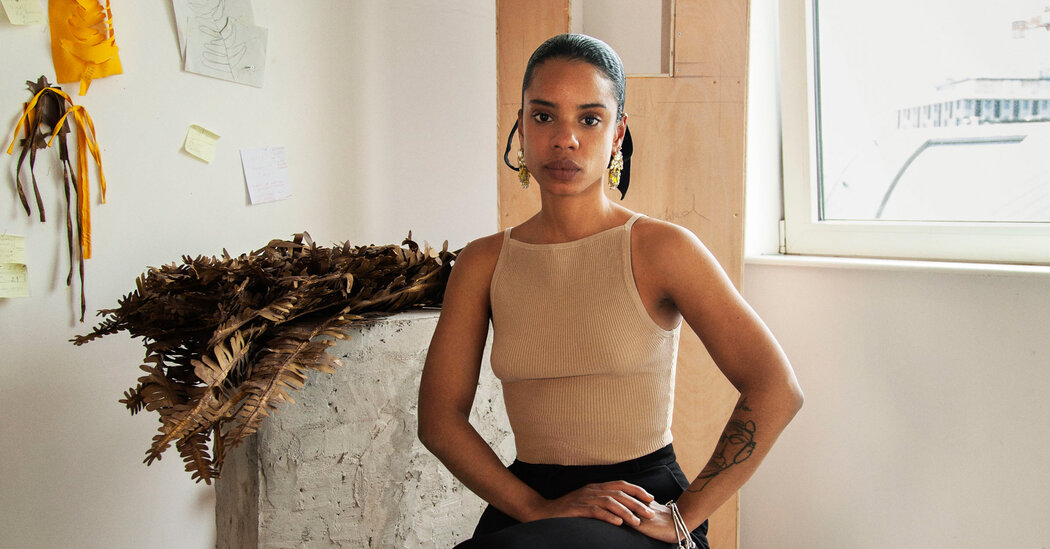In Solo showA brand new collection of journal T, we ask the black performers to deal with an inventory of three helpful works which have encountered or made and to assume how their observe is related to a broader artwork.
Born in Lisbon and grew up in Luanda, Angola, Interdisciplinary artist Sandra Poulson makes sculptures and installations that unravel the continued results of neo -colonialism. Poulson studied style design in Portugal and the UK and was initially thought-about a trendy “practitioner” as she says. Now the artist – who was born in 1995, 20 years after Angola’s independence – consists of vivid, monochromatic garments, in addition to concrete, cleaning soap, mud and wooden in her works, fastidiously extracting supplies which might be associated to on a regular basis life within the nation. Her first museum exhibition will open this week on MOMA PS1 In Lengthy Island Metropolis, Queens, together with a brand new set up of assigned furnishings and wooden that trace on the circulation of uncooked items between Angola, the Netherlands and the remainder of the world. Right here she discusses three artworks which might be significant to her.
The primary job that impressed her
Louise Bourgeois ‘Legs’ (2001)
The primary time I noticed this piece was within the exhibition “Rooms of Artists” at Tate Trendy in 2016, after I first moved to London. That is most likely the primary cloth -based work, which I noticed that I didn’t contemplate textile artwork. I knew it was a sculpture and the seriousness he commanded was one thing I used to be striving for. At the moment, I made drawings and blended media and was skilled to grasp the material at London School of Vogue and Central St. Martins. Imaginative and prescient [“Legs” and other fabric pieces in that exhibition]I spotted that doing sculpture doesn’t essentially imply that I’ve to work with plaster, metal or wooden. It was revolutionary for me.
Work through which he returns many times
“Demo Da Cracía” by Mosquito of Nastio (2013) (2013)
The efficiency and video artwork of Angolas artist Nátitio Mosquito has humor that naturally involves a society that’s coping with its personal ghosts. [The Angolan civil war, fought between Communist and anti-Communist groups, lasted from the country’s independence in 1975 until 2002.] “Demo da Cracía” is a satire and social remark and I can acknowledge even the smallest [Angolan pop-cultural] Video references. This sense of instant recognition remained with me, [as has the artist’s] Capability to speak about very critical subjects in an inexpensive approach.
A brand new personal work of which is happy about
Cabind Desires (2025)
I purchased this board from a number of US diploma within the Netherlands that instructed me it was a American mattress with strong wooden. As quickly as I obtained to the studio and began to pierce it, I spotted it was manufactured from veneer plywood, chipboard and mdf [medium-density fiberboard] It’s produced in China. It was hole! I felt indifferent. This nonselid panel regarded like the right [backdrop] For the European Union brand, the identical brand, which is propaganda items, reminiscent of stickers and polo shirts which might be widespread in Kabinda, coastal Angolat territory. In 1956, an American firm opened oil from the Cabind shore and till 1975 Portugal bought this oil to finance the prevention of Angolan independence. I’m interested by how the symbolic presence of the European Union [in this former colony] refers to his true financial pursuits.
This interview was edited and condensed.

